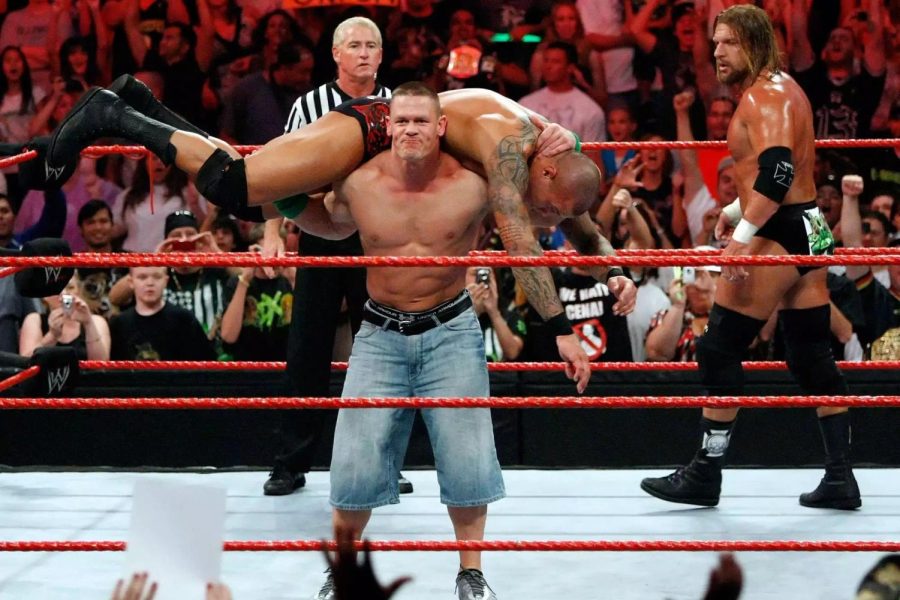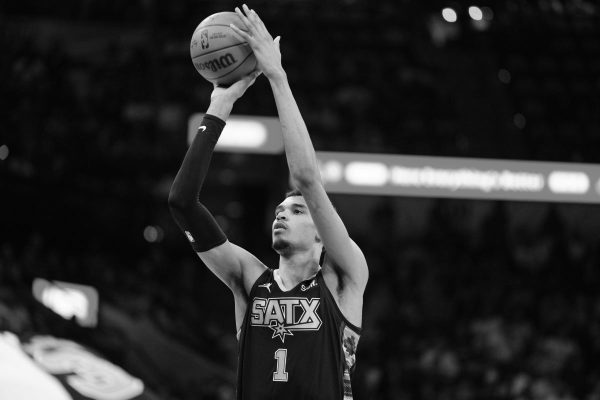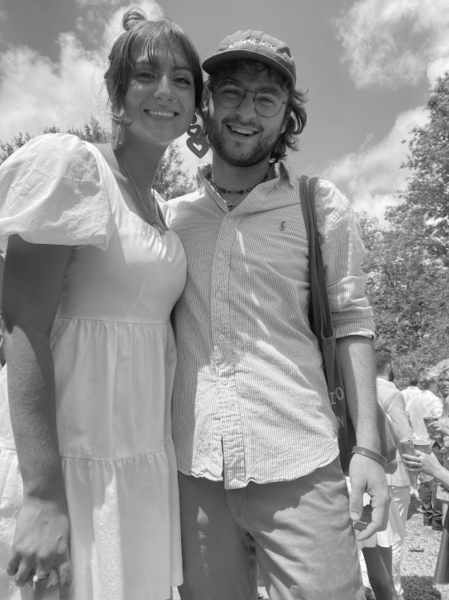WWE Entertains Fanbase With Unique Characters
Photo courtesy of Ethan Miller
WWE continues to entertain and bring people together.
In October, I drove to Toledo to attend a taping of WWE’s Friday Night Smackdown. Armed with a homemade sign that read “Pride Fighter” with a rainbow through the center, I made my way to the Huntington Center excited to see my favorite superstars in person for the first time. I went alone, but I certainly didn’t feel lonely due to the frenetic energy of the crowd and the little girl next to me who was eager to chat and ask questions — she told me her favorite wrestler was Liv Morgan “because she’s pretty and strong.”
This was my first time attending a WWE event since I became interested in professional wrestling, an interest which often comes as a surprise to people. After all, I don’t scream “wrestling fan” at first glance; I’m a woman, I have no interest in other sports, and I’m not a violent person. Where’s the appeal in watching people hit each other? But I’m not as much of an anomaly as I may seem —just ask the online army of queer women who all talk about professional wrestling with just as much passion as I do. Wrestling fans span all kinds of people, from that little girl next to me in Toledo to the straight men who represent the more traditional image of the wrestling fandom.
The question remains, though, what makes all sorts of people want to watch people in Spandex duke it out? Well, part of it is the action — sometimes it’s fun to watch people slam each other, do a flip off the top rope, or get hit with steel chairs — but a deeper part of the appeal is that professional wrestling is a type of long-form storytelling.
In order to explain how storytelling in wrestling works, we’re going to have to acknowledge something: Wrestling is fake. Despite what outsiders sometimes think, this doesn’t actually come as a shock to most fans, nor is it even a well-kept secret, at least in the current era. Some fans will push back and tell you that it’s not fake, it’s predetermined — after all, wrestlers are still athletes, even if they know how their matches are ending — but the point remains more or less the same. Wrestling isn’t real, and that’s what draws people to it.
Part of the fakeness that makes wrestling so great is the characters; even if the performers are real people, they’re not portraying their real selves. Most of them aren’t going by their real names. WWE’s characters run the gamut from mundane to absurd, realistic to supernatural, and genuinely good to totally evil. Not only does this diversity mean that the show is fun to watch, with good guys to cheer for and bad guys to boo, it also means that there’s a favorite character for everyone. Any type of person or demographic you can think of, there’s a character or group that appeals to them. Liv Morgan might have been the little girl in Toledo’s favorite because she’s pretty and strong, but if goth girls are more your style, Rhea Ripley might be up your alley. If you like guys with swords, Drew McIntyre might be for you. A rap group? A male modeling agency? A pair of vikings? WWE’s got you covered.
The other part of the fakeness is the story that goes along with professional wrestling. Yeah, the outcomes of the matches are predetermined, but it’s not just for the sake of being fake, it’s for the sake of storytelling. In fact, half of professional wrestling isn’t even wrestling — it’s performers talking to the audience or each other, slinging insults, explaining their motivations, and generally advancing the stories they’re a part of. WWE’s diverse cast of characters get into all sorts of storylines, spanning genres from drama to comedy to supernatural horror. A viewer might tune in and witness an ax murderer’s wedding, a feud between twin brothers, and a contract-signing-turned-brawl all in one night. It’s like a soap opera, but with more powerbombs.
So, professional wrestling is fake, and that’s why people like it. But that’s only half the story. Wrestling is built on community. Going to that show in Toledo wasn’t just about getting to see my favorite superstars in per- son, it was also about meeting people who loved what I loved. It was about chatting with that little girl, feeling the energy of the crowd, and joining in with everyone around me to cheer for the wrestlers we liked and boo the wrestlers we didn’t. Ultimately, wrestling is about people. It brings people together across ages, genders, sexualities, and more, and unites us around a common interest: watching people in funny outfits beat each other up. Because wrestling, like most things, is better when you share it.




